Falcon fledge watch at UC Berkeley
By Christina Tarr
In spring, the U.C. Berkeley campus is a veritable nursery. I walk across campus almost daily, and have regularly seen baby juncos, phoebes, crows, Brown Creepers, and Red-shouldered Hawks, not to mention skunks and raccoons. This spring, though, the most exciting family by far were the Peregrine Falcons nesting on top of the Campanile, the 307-foot bell tower in the middle of campus. The two chicks, named Fiat and Lux, fledged during the first week of July.
While peregrines have overwintered on the Campanile, as far as we know they have never nested there before this. But now that they have successfully nested there once, they will likely return in years to come.
Because I work on campus, I was lucky enough to be able to hang out intermittently with the volunteer “fledge watch” for most of the week. First, we assembled equipment, boxes, and a net, in case we had to catch a bird on the ground. We posted signs around the area, telling people what to do and whom to call if they found a bird on the ground. The watchers started each day by 7 a.m. in a little patio near the northwest corner of the plaza surrounding the Campanile, scopes trained on the tower. Around 11, when the fog burned off and the sun came out, they moved to a shaded spot near Evans Hall, directly north of the tower. As the day wore on, they moved to the west side, near South Hall, or back to the little plaza south of the library. They stayed until dark, typically wrapping up about 8:30 or 9 p.m.
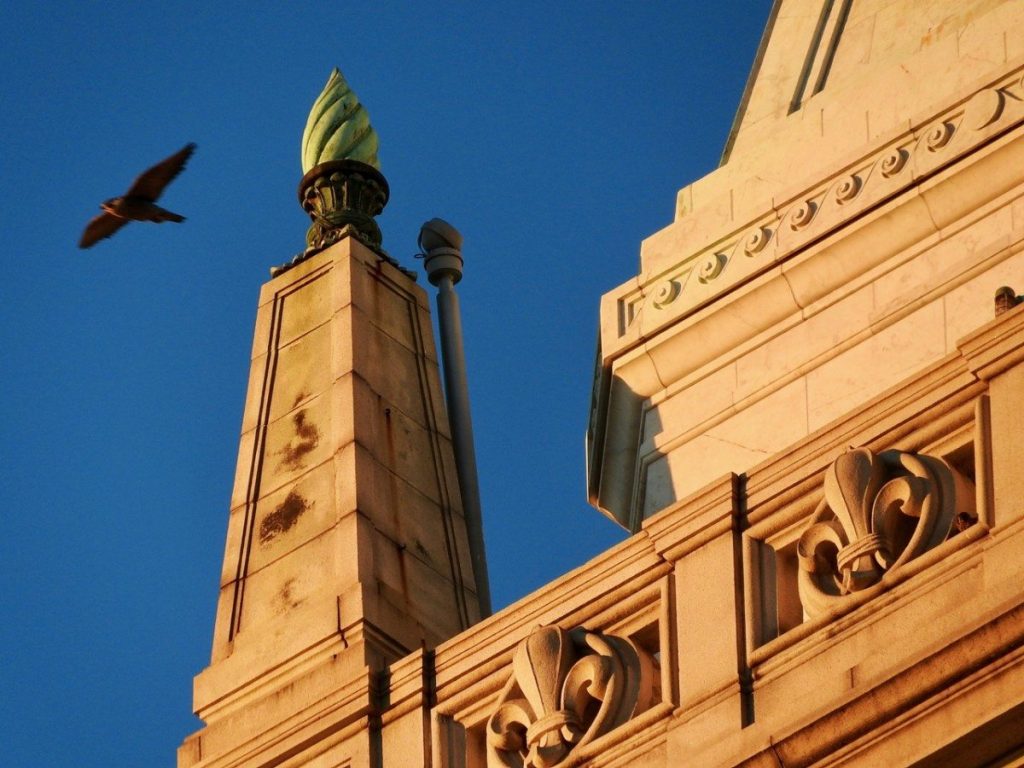

The birds spent long periods of time doing not very much. The parents flew in and out, bringing food to the hungry and noisy chicks. They sat on the tower keeping watch over things. They liked the corners, the tops of the light stands, and the top of the cupola. The mother in particular spent a lot of time sitting on the decorative carved garland directly below the balcony level where the chicks were. The mother screamed. The chicks screamed. Occasionally, more and more often as time went on, we could see the babies poke their heads out between the decorative fleurs de lis that made up the railing around the balcony. Or we would see them flapping (and screaming) behind the fleurs de lis.
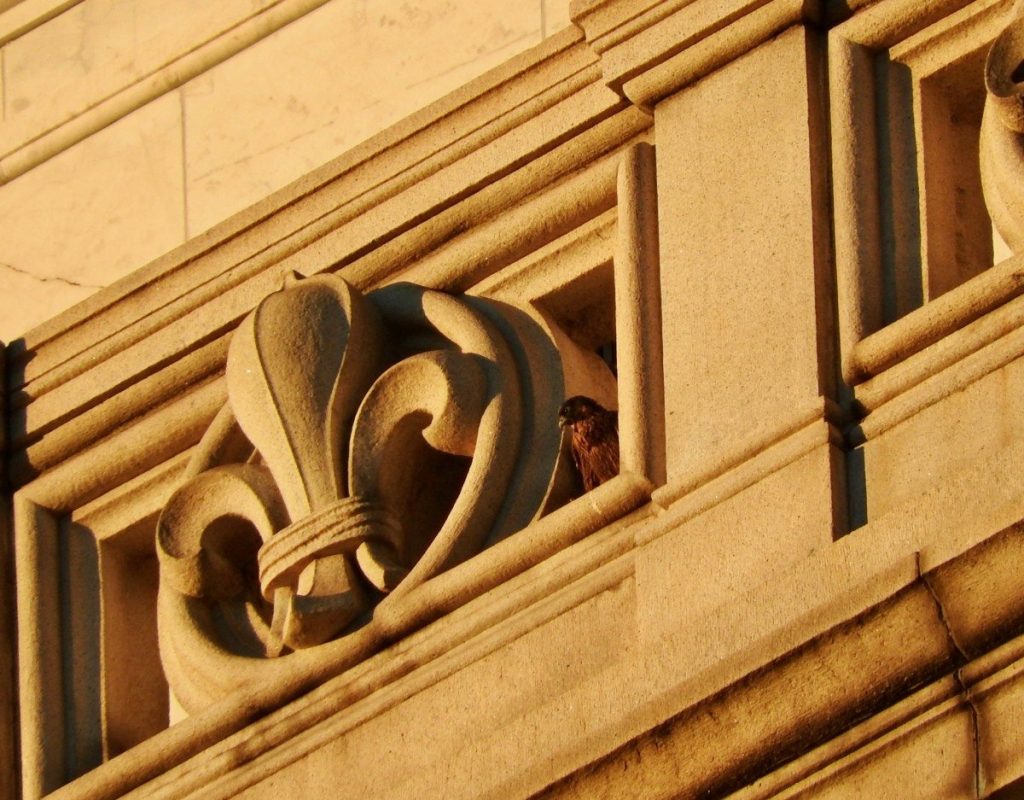
Finally, on Monday, July 3, at about 4:30 in the afternoon, Fiat took his first flight off the east side. The fleurs de lis were great at keeping the babies in, but did not allow them to open their wings until they stepped through. As a result, Fiat could not spread his wings and lost altitude. Mom and dad followed closely as he circled back, then north, then west, then south around the tower, losing altitude very quickly. By the time he passed the trees on the west side of the tower he was well below tree top level and continuing to lose ground. Mom and dad had gone back to the tower and he ended up safely in a tree south of the Campanile. We thought he would spend the night there, but when we checked later, he was gone. Then, at about 8:30 p.m., Fiat and his mom came screaming loudly back from an area southeast of the tree. They flew up the tower, but it seemed that he did not have the elevation to make it to the top. He disappeared behind the tower – did he slip into the carillon level, one floor below the nursery level?

We left for the night, but the next morning one of the watchers went up to the carillon level and looked but did not find him, though she did see footprints. We thought we heard two babies crying from the top, so it seemed that he may have made it to the top.
As far as we could see, no babies went anywhere on Tuesday.
We saw no babies go anywhere on Wednesday, either, though we thought we heard only one baby crying from the top. In addition, we could only see one baby on the nursery ledge – which did not prove that there were not two, but also did not prove that there were two. The parents took to circling low over an area to the west of the campanile where one of the watchers may have seen a falcon-like bird flying into a tall redwood, but he couldn’t be sure. It seemed like Fiat may have slipped out again, and was hiding somewhere on the west side of campus.
Thursday was day 44 since hatching, which was two days past the usual day for female falcons to fledge. The watchers were weary. But Lux began to spend a lot of time looking out through the fleurs de lis. Finally, shortly before 1 p.m., a juvenile flew in from the west, tried to land on the bars on the carillon level, was frightened by something and flew back to the west. Fiat! Shortly after 1, Lux took a short flight out and back over the east side, landing safely on the nursery level. Shortly after that, Fiat returned again, and this time made it back to the nursery level. They had fledged, and were all safely home!
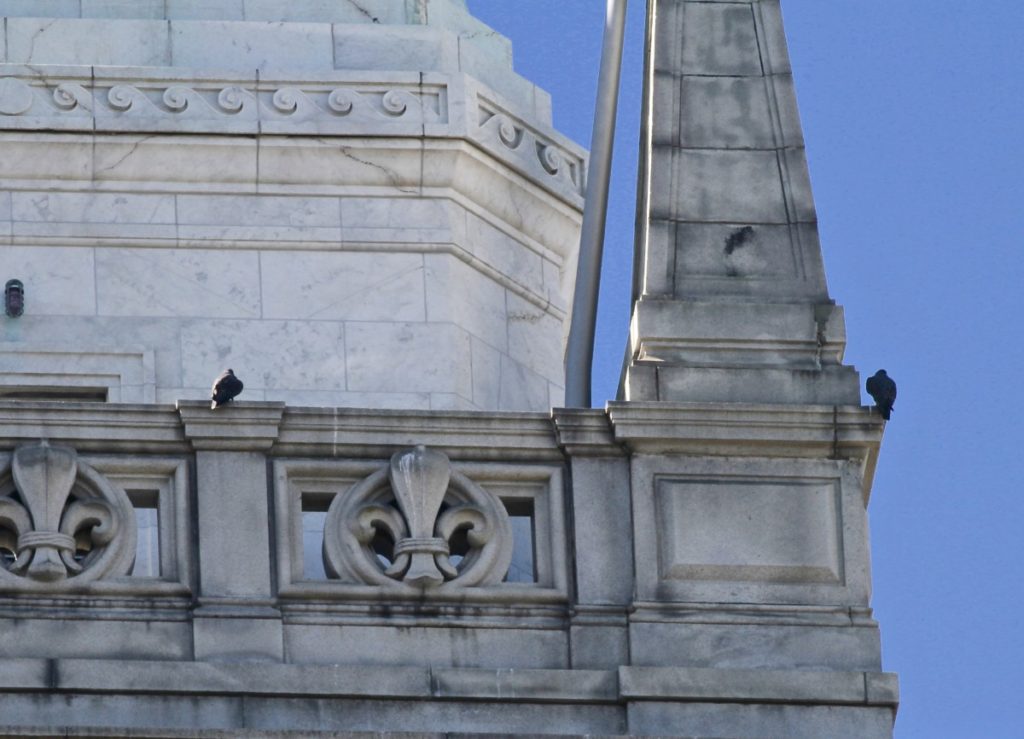
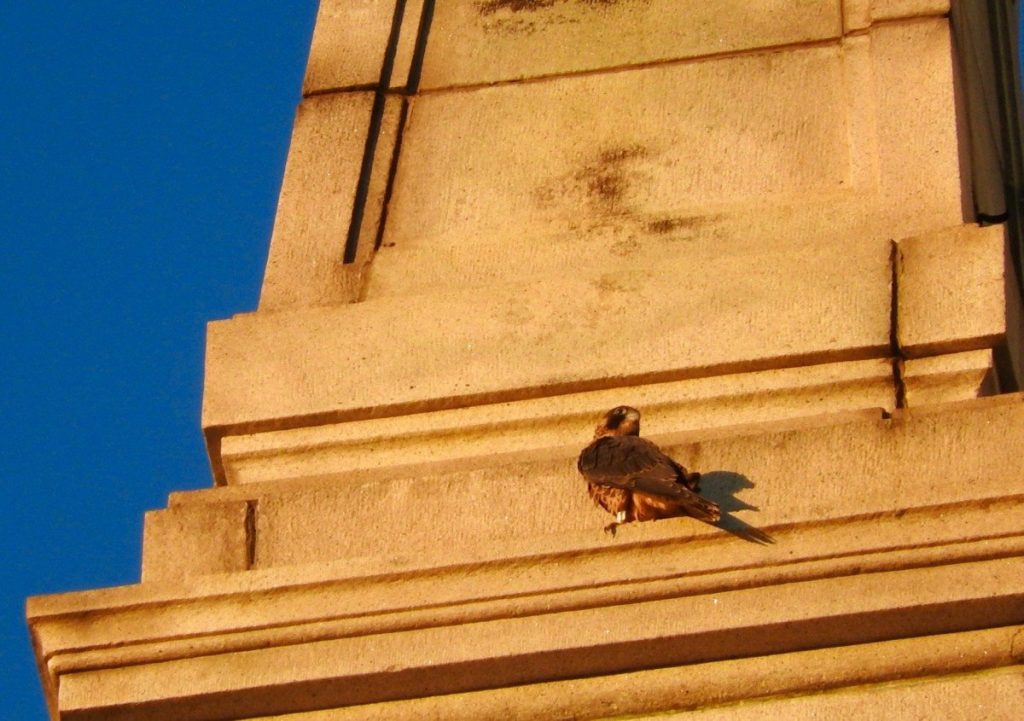
By Friday morning, July 7, the juveniles had advanced enough that one was napping up on the ledge, which meant they would be able to fly in and out over the ledge and would not need to squeeze through the fleurs de lis. A bit later, a watcher observed an attempted in-air food exchange!
Then the story turned sad. A few days after she fledged, Lux flew into an enclosed balcony and died, apparently in a window collision, while trying to get out. This was devastating both to the fledge watch team and others who had been following the falcons’ progress from afar.
The good news is that U.C. has agreed to start looking at its need for bird-safe windows. And, as of last week, Fiat and his parents continued to be seen flying around the campanile. The fledge watch leader reported on July 18:
“Both adults and 03 [Fiat] were on the Campanile this morning. Fiat flew out in a circle and landed near mom. Mom flew away. Fiat followed. Soon they were both in the air circling just west of Evans Hall. Then Fiat followed mom west to the far side of campus and both dipped down to tree level and went out of sight. A few minutes later, Fiat was back on the tower screaming away as usual. We can expect another several weeks or more of this kind of action. Then Fiat will range farther away while the adults remain. “
Fiat — whom we are guessing is male, since he flew within the typical time frame for males — is well on his way. He should spend anywhere from two weeks to two months around the Campanile, learning to fly and hunt while his parents feed him, before leaving to make his way in the world. In the meantime, the family is fun to watch, so if you’ve got the time, come see them fly. The campus is easily accessible by BART, and the Campanile is easy to find.
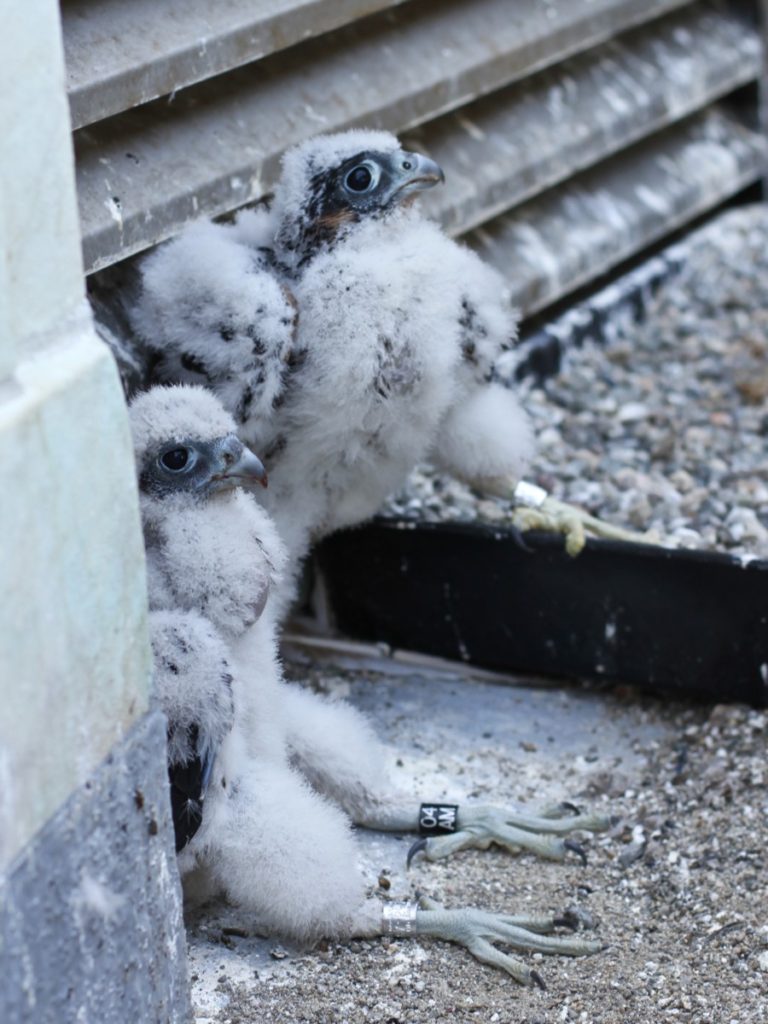
Christina Tarr is a librarian at Berkeley Law Library on the UC Berkeley campus and graduated from Golden Gate Bird Alliance’s 2016 Master Birding class.
